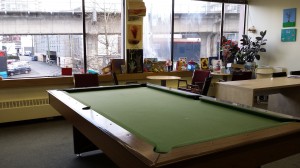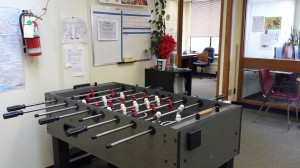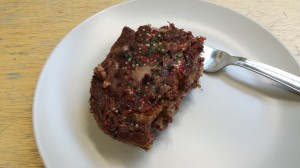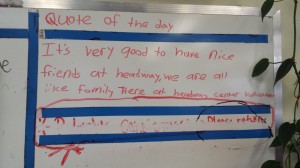My second volunteer experience at Headway differed vastly from the first. With only a few members present, lunch was a straightforward, yet enjoyable affair. Upon entering the center, I was enthusiastically greeted by Ms. X, who I had not previously met. Her friendliness to a complete stranger such as myself was encouraging and refreshing. In the downtime before panini-making commenced, I sat and conversed with Ms. X and another member. Ms. X was quite forthright and very quickly began to tell me her story. As a young child she had sustained her acquired brain injury (ABI) from cancer, the impacts of which remain with her decades later. Despite difficulty enunciating and verbally expressing her thoughts, she remained astutely aware of this, even telling me at one point that she had poor short term memory. Imagine my surprise when she pulled up an online game of Backgammon and whizzed through it, explaining to me the rules and her strategy. This individual, who had been described to me by other members as having poor memory and attention (even forgetting how to get back from the washroom) demonstrated an ability to use working memory to plan, strategize and process numbers and scoring.
Many of my science courses emphasize treatments that are pharmacological in nature; however, medication comes with side effects and variable outcomes. I began to contemplate the concept of alternative therapies, as previously presented in class. Perhaps this game, or others, may have provided some method of informal cognitive neurorehabilitation.
Indeed, therapeutic effects of video games have been found on the physical, cognitive and social functioning of ABI patients. Kloet et al. (2012) tested the use of the Nintendo Wii in children, adolescents and young adults with ABI, finding significant improvements after 12 weeks in attention, information processing speed and tasks requiring working memory and visual-motor coordination. Promising – but one must keep in mind that games played were tailored to achieving the individual goals set, and played in the presence of physical therapists, occupational therapists and neuropsychologists. While conclusions may not necessarily be generalized to casual gaming without additional rehabilitation, the benefits of alternative therapies are numerous. Despite Headway’s relaxed, non-clinical atmosphere, it seems well-equipped for simple routines, prompting me to think that possibilities for improving physical and cognitive function lie in even the most informal of set-ups.
Headway’s vast array of art supplies made me ponder the potential and effectiveness of implementing art therapy sessions in some rehabilitation centres:
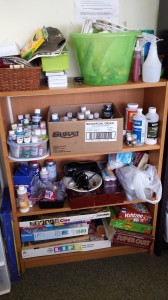
The benefits of art therapy are extensive, including relative inexpensiveness, greater entertainment than traditional therapies and self-expression that transcends aphasias or communication barriers.
- Perhaps foosball with additional regimens of conventional rehabilitative therapy could aid visuomotor skills and coordination.
Even if regimented therapies are not instilled, it’s wonderful that Headway has all these amenities available, and fascinating to see members learning and improving skills in a casual context, having fun all the while.

